- Home
-
Our tours
- Our tours
- Africa
- Asia
- Latin America
- North America
- Oceania
- Holiday types
-
Accommodation
- Accommodation
- Africa
- Asia
- Latin America
- North America
- Oceania
-
Practical info
- Practical info
- Africa
- Asia
- Latin America
- North America
- Oceania
- Info & contact
- Blog
The weather in Thailand by month
03.11.2024
A tour to Thailand offers everything right from sunny beaches and lush rainforests to colourful markets and vibrant cities.
But Thailand does not only offer a diversity of experiences. The weather may also vary right from sunny days to heavy rainfalls. But what can you expect when planning your next adventure in Thailand?
In this blog post, you can learn more about Thailand’s weather, climate and seasons.
Climate in Thailand
Thailand is located in Southeast Asia and has a tropical climate that is influenced by monsoon winds.
The Southwest Monsoon brings with it a warm, humid wind from the Indian Ocean, typically from around May, which means that it starts raining more in large parts of Thailand.
As Thailand is located in the tropical climate belt, the country will experience relatively high temperatures all year round. However, it can get chilly in the northern, mountainous regions, and the further south (and closer to the Equator) you go, the lower the temperature variations throughout the year. The warm temperatures also contribute to Thailand’s popularity as a travel destination for many Europeans.
Thailand’s seasons
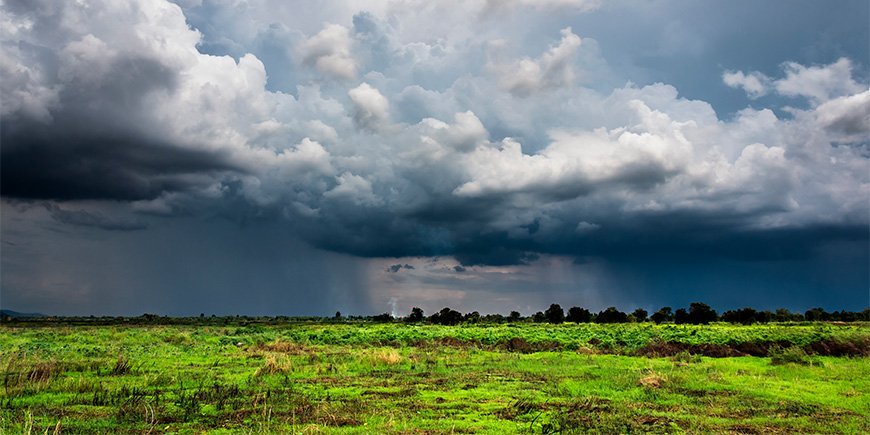
Thailand’s seasons are influenced by the country’s location close to the Equator as well as by the monsoons.
Overall, Northern Thailand (e.g. Chiang Mai, Chiang Rai and Mae Hong Son) and Central Thailand (e.g. Bangkok, Ayutthaya, Chanthaburi, Koh Kood and Koh Chang) are divided into three primary seasons.
- The cool season: November to February
The period is characterised by pleasant (not too hot) temperatures and minimal rainfall. Even though it is called the cool season, it does not really get cold, and the months are part of Thailand’s high season. It can get chilly in the northern, mountainous regions. - The hot season: March to May
The hottest weather of the year with high humidity and a risk of showers.
- The rainy season: June to October
The Southwest Monsoon brings rain in the form of short, but heavy, showers. In between the showers, you can expect sunny weather, and the rain contributes to lush landscapes.
Southern Thailand varies slightly in terms of the weather compared to Central and Northern Thailand due to its location further south and the surrounding seas: the Andaman Sea (to the west) and the Gulf of Thailand (to the east). These areas are affected by two monsoons which create two distinct seasons in both parts of Southern Thailand:
At the west coast and the Andaman Sea (e.g. Khao Sok, Phuket, Krabi, Khao Lak and Koh Yao Yai), the rainy and dry seasons are as follows:
- Rainy season: April to November
Hot weather with a high risk of rain. On some islands, the rain may mean that ferry crossings are limited and hotels close down, especially in September and October. This applies, for example, to Koh Ngai and Koh Mook. It is therefore recommended that you visit some of the other islands on the west coast or the islands on the east coast during these months. - Dry season: December to March
Lovely warm weather with occasional rain. The months are the best in which to visit the southwest coast and the islands of the Andaman Sea.
At the east coast and the Gulf of Thailand (e.g. Koh Samui, Koh Phangan and Koh Tao), the rainy and dry seasons are as follows:
- Rainy season: October to December
Hot and dry weather - Dry season: January to September
Generally dry weather with the possibility of occasional light rain. A popular time to visit the islands in the Gulf of Thailand.
The weather in Thailand by month
The weather in Thailand varies greatly depending on when you travel and where in the country you are travelling.
Regardless of when you visit Thailand, you can experience stunning scenery, impressive cultural heritage and relaxing tropical idyll. Below you will find an overview of the weather in Thailand month by month.
January in Thailand:

January in Thailand has many hours of sunshine and very little rain, making January one of the most popular times to visit Thailand.
Northern and Central Thailand are in the middle of the cool season. This typically means pleasant temperatures with the possibility of cool nights, especially if you are in high-altitude areas in the northern part of Thailand, for example in Mae Hong Son.
In Southern Thailand, it is the dry season. At destinations on and off the west coast, for example in Krabi and on Phuket, January is in the middle of the dry season, and it rarely rains. Off the east coast, for example on Koh Samui and Koh Phangan, January is the first month of the dry season, and the area here gets more rain than on the west coast. In Khao Sok National Park, which is located on the mainland, the first months of the year are also among the driest of the year.
February in Thailand:
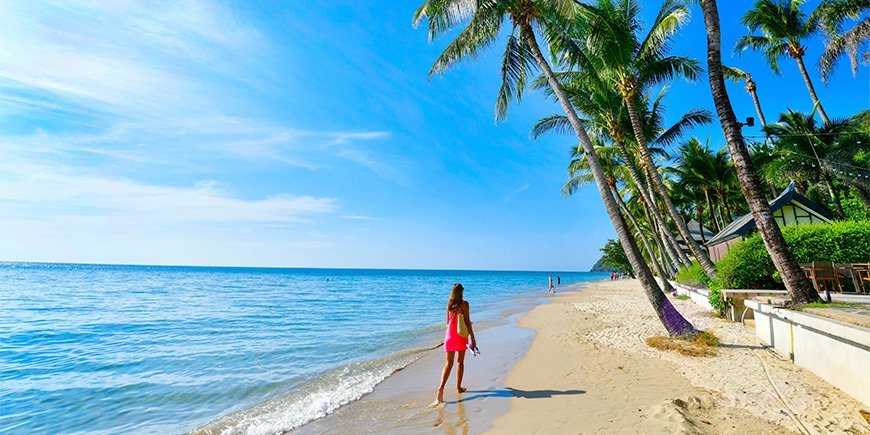
February is still high season in Thailand, and you can expect sunshine and dry weather in pretty much all of Thailand.
In Northern and Central Thailand, most of February is in the cool season. This means that you will experience dry weather and pleasant temperatures that provide perfect conditions for exploring attractions in Thailand’s major cities, e.g. Thailand. Bangkok and Chiang Mai, as well as for lazing on the beach on islands such as Koh Samet, Koh Kood and Koh Chang.
In Southern Thailand, February is hot and dry, and temperatures are rising. The month is typically among the driest of the year, along with January on both the western and eastern sides.
March in Thailand:
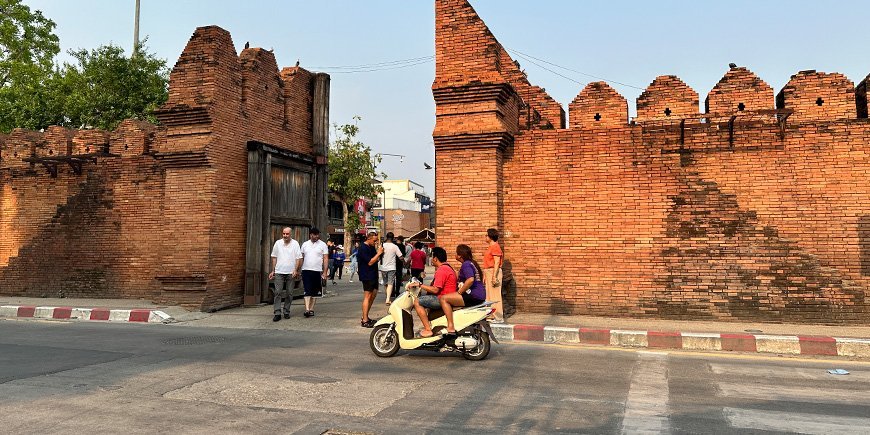
In Northern and Central Thailand, late February/March marks the beginning of the hot season. During these months, temperatures are rising, and the heat can become intense in cities like Bangkok, Sukhothai and Chiang Mai.
In Southern Thailand, the dry season continues, and it still rains very little, but temperatures are rising, and there are plenty of hours of sunshine. The number of travellers starts to decrease, and you may be fortunate enough to find fewer people at the beach destinations than in, for example, January and February.
April in Thailand:
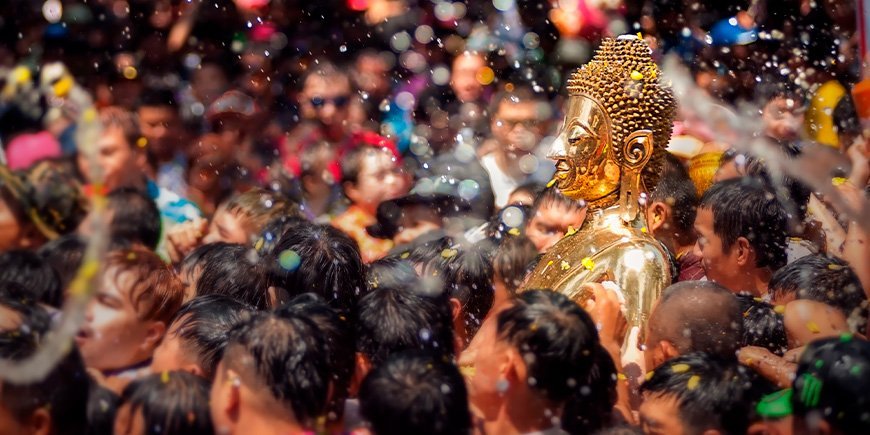
April is the hottest month of the year in Northern and Central Thailand.
In most places, the average temperatures can get well above 30 degrees during the day. Evenings and nights are more pleasant with warm temperatures.
On the islands of Southern Thailand, temperatures are typically slightly lower, but still among the hottest of the year.
On the west coast of Southern Thailand, for example on Phuket and in Krabi and Khao Lak, the rainy season begins in April, but the month is at the beginning of the season, so there is typically not yet as much rainfall as there will be in the coming months.
Conversely, it is dry season on the islands on the east coast of Southern Thailand, for example on Koh Samui and Koh Phangan. The weather is hot and generally dry, although you should expect short and intense showers occasionally.
The intense heat in particular means that there are significantly fewer travellers in Thailand in April, which is otherwise a relatively inexpensive month to visit Thailand. On the other hand, those who travel can, among other things, experience Songkran, which is the Thai New Year.
May in Thailand:
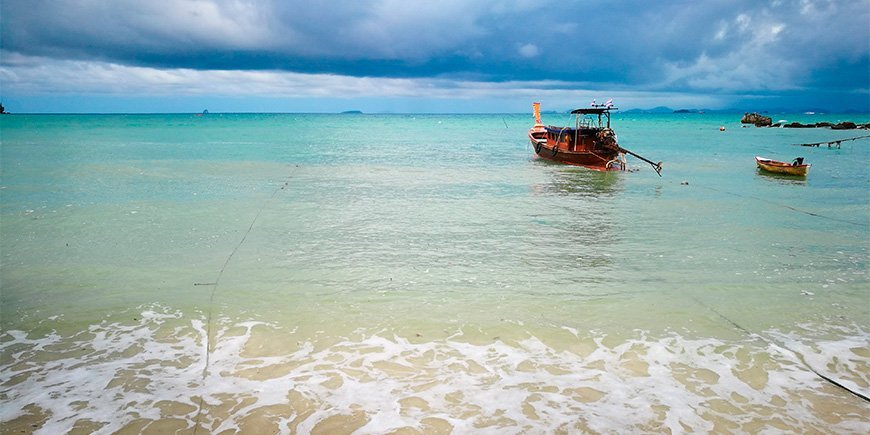
In Northern and Central Thailand, the hot season continues in May, and the amount of rainfall increases in these areas as we approach the rainy season during May. Temperatures remain high, with high humidity, but the increased amount of rain may have a slightly cooling effect.
On the islands off the southwest coast of Thailand, for example on Phuket, Koh Lanta and Koh Yao Yai, the rainy season continues. If you are dreaming of island hopping in Thailand in May, however, you should steer clear of Koh Ngai and Koh Mook during this period (between May and October), as the islands may have limited accessibility due to rain. Instead, we recommend that you visit Phuket and Koh Yao Yai, or move over to the southeast coast of Thailand, for example on Koh Samui and Koh Phangan, where the dry season continues with dry and sunny weather until September.
June in Thailand:

Thailand in June continues where May left off, with high temperatures and rain in large parts of the country.
There will be more frequent and heavier rainfalls, but it rarely rains all day. You can therefore still enjoy many hours of sunshine in Thailand in June.
In both Northern and Central Thailand, the rain also brings with it lush landscapes, for example in Chiang Mai or Mae Hong Son.
This also applies to the west coast of Southern Thailand, where June is in the middle of the rainy season. June is therefore a good time to see roaring waterfalls and lush vegetation, for example on Phuket or in Khao Sok National Park.
If you are dreaming of sunny weather in June, the dry season continues on the east coast of Southern Thailand, for example on Koh Samui and Koh Phangan.
July in Thailand:
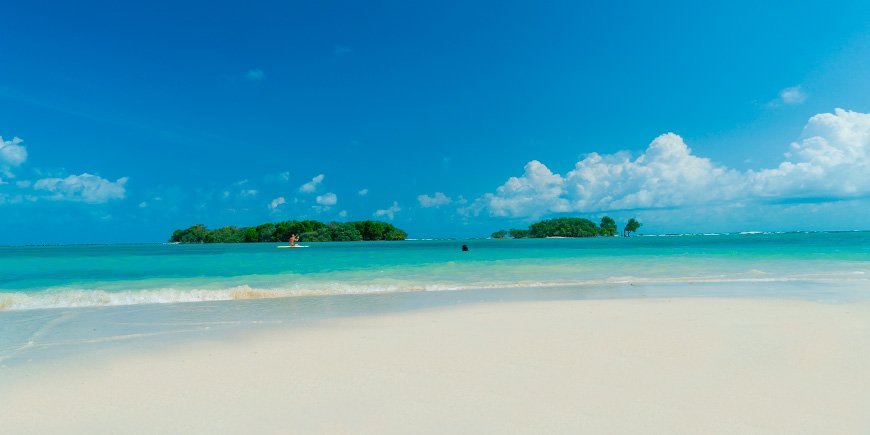
In July, the monsoon is in full swing, giving large parts of Thailand regular rain and high humidity, although still with the possibility of many hours of sunshine.
In Northern Thailand, the landscapes benefit from the rain, and the vegetation is green and lush around Chiang Rai and Chiang Mai. In Central Thailand, it rains a lot, but there will often also be opportunities for exploring Thailand’s sights in dry weather.
On the east coast of Southern Thailand, it is still dry season in July (lasts until September) with only brief rainfalls, and it is therefore a good month to experience, for example, Koh Samui and Koh Phangan. The west coast of Southern Thailand is instead right in the middle of the rainy season, and you can therefore expect hot weather with a high probability of rain.
August in Thailand:

Except in Southern Thailand, August is one of the wettest months in Thailand. However, that does not mean you cannot visit Thailand in August. You may be lucky enough to find good prices of tours to Thailand in both August and September, which are typically among the cheapest months of the year.
In Northern Thailand, cities such as Chiang Mai, Chiang Rai and Mae Hong Son see the highest amount of rainfall of the year in August. In Central Thailand, for example in Bangkok, there is plenty to do despite the rain, for example visits to temples, restaurants or covered markets. In addition, there are fewer travellers in August, which means that you may be fortunate enough to have these attractions more to yourself.
In Southeastern Thailand, August is the penultimate month of the dry season. There are still sunny days and lower probability of precipitation than during the rainy season. So there are also plenty of opportunities for a beach holiday in Thailand in August, for example if you visit Koh Samui or Koh Phangan. In Southwestern Thailand, the rainy season continues, and it rains a lot in August.
September in Thailand:

The rain continues in September, with wet conditions in large parts of Thailand. With the exception of the east coast of Southern Thailand, it is the rainy season in Thailand. Just like in August, you can find tours at favourable prices in September.
September is generally not considered to be the best month in which to travel to Thailand, but if you love nature experiences, September can easily be a good month in which to travel. In Northern and Central Thailand, you can experience greener and lusher landscapes than in most other months after many months with rainy season. For example, waterfalls and rivers in Khao Yai National Park, east of Bangkok, will be full of water, which provides beautiful nature experiences.
Southwestern Thailand is in the middle of the rainy season with high temperatures and great probability of rain. September is the last dry season month in Southeastern Thailand, and as the rainy season approaches, you can expect more rain than in the previous months.
October in Thailand:

October marks the approaching end of the monsoon season (the Southwest Monsoon, which started in June), which means that the amount of rainfall decreases in Northern and Central Thailand, while humidity also gradually becomes lower, especially towards the end of the month.
The landscapes of Northern Thailand, Chiang Mai and Chiang Rai, are lush and green, and October is therefore a great time of the year to experience the country’s breathtaking nature.
In Southeastern Thailand, the rainy season starts in October, while the rainy season in Southwestern Thailand is coming to an end. Here, the rainfall will slowly begin to decrease during October.
November in Thailand:
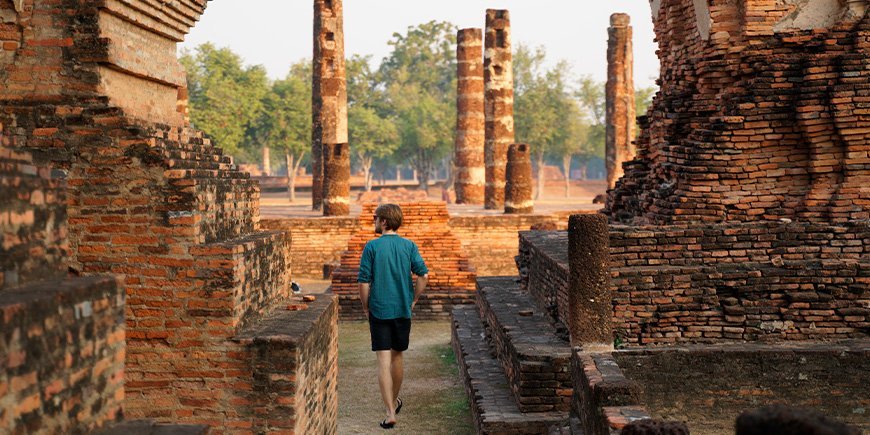
November marks the beginning of the cool season in Northern and Central Thailand. However, this does not mean that it is cold – on the contrary.
Temperatures are warm and pleasant with lower humidity, making the cool season (which lasts until February) the most popular time to visit Thailand for many travellers.
In Northern Thailand, the dry weather provides good conditions for hiking, for example in Doi Inthanon National Park, where Thailand’s tallest mountain is located. In cities like Sukhothai or Bangkok in Central Thailand, the dry weather is ideal for exploring their rich culture and history.
November is the last rainy season month on the west coast of Southern Thailand, where, for example, Phuket and Krabi are located. The rain is decreasing, although it is still present. On the east coast of Southern Thailand and the islands in the Andaman Sea, the rainy season continues until December, and November is typically the month with the highest rainfall on islands such as Koh Phangan, Koh Samui and Koh Tao.
December in Thailand:
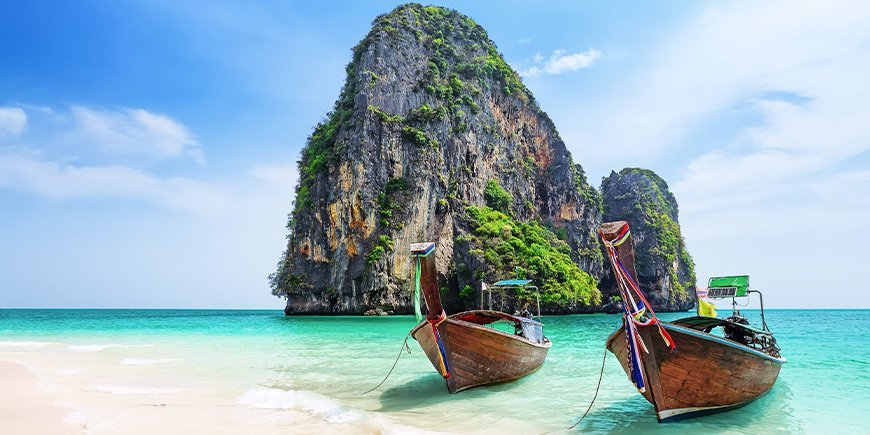
December is a dry season month in most of Thailand. Temperatures are warm and pleasant, and you can expect lots of sunshine and generally dry and warm weather. The great weather means that many people choose to spend Christmas in Thailand, and December is therefore also one of the most popular months to visit Thailand.
In Northern and Central Thailand, December is part of the cool season, which is characterised by relatively high daytime temperatures with cooler nights. In both Chiang Mai and Chiang Rai, the weather remains ideal for outdoor activities, for example hiking in the mountainous areas. In Bangkok, the temperatures are pleasant and with low humidity, which makes it ideal for exploring the city’s many charming streets, food markets etc.
On the islands in Central Thailand, for example Koh Chang, Koh Samet and Koh Kood, you can expect sunny and dry weather, which is ideal for a beach holiday, and in Chanthaburi you can explore Thai history and culture.
In Southwestern Thailand, the dry season starts in December, and sunny days and minimal rainfall form the perfect setting for a tropical beach holiday, for example on Phuket and Koh Yao Yai.
In Southeastern Thailand, the dry season is approaching. December is the last rainy season month, and although there is still rain on, for example, Koh Samui and Koh Phangan, it will decrease and fall as heavy, but short, showers.
When is the best time to go to Thailand?
The time of year that you choose for visiting Thailand may be of great importance to your tour. The best time to go to Thailand will depend greatly on the purpose of your tour.
Thailand offers opportunities for creating amazing travel memories all year round.
Because even though there are weather statistics and weather forecasts, the weather remains an unpredictable factor, and you can never be completely sure what it will be like on your particular tour.
And no matter what the weather is like on precisely your tour, Thailand promises exceptional travel experiences from start to finish.
TourCompass – From tourist to traveller
